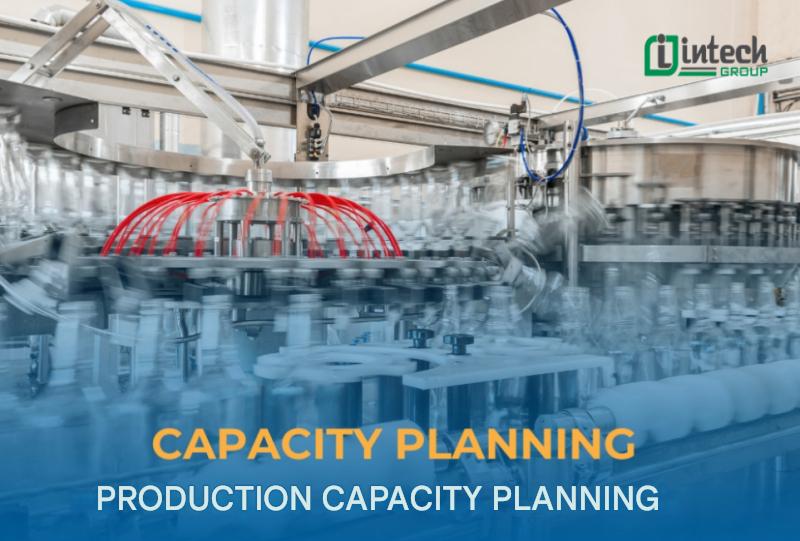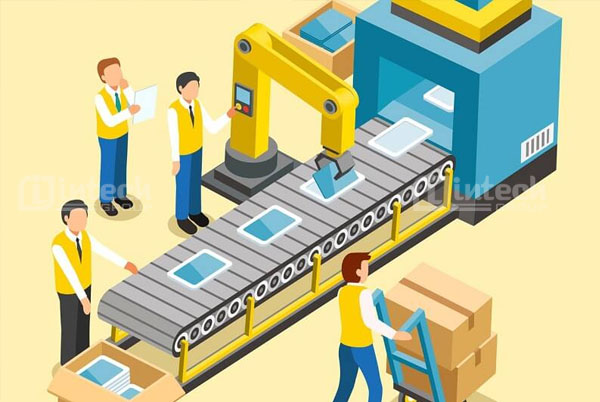What is production capacity planning? Role & classification of capacity
18-10-2025 21
Capacity Planning is the process of determining the production resources needed to meet the production needs of the enterprise. This is an important step to ensure that the enterprise has sufficient capacity in terms of human resources, machinery and raw materials before proceeding with detailed production planning. This planning helps the enterprise maintain efficient operations, promptly respond to operational needs in the factory and ensure production output according to market requirements.
What is Capacity Planning?
Capacity Planning is an important process in production management that helps businesses determine the maximum capacity they can produce in a specific period of time. This process is not only based on calculating the number of machines, equipment, and workers, but also takes into account factors such as fluctuations in market demand, resource constraints, and changes in technology.

Capacity Planning
The Role of Production Resource Planning
Meeting Market Demand
Production capacity planning ensures that businesses can fully meet market demand and customer requirements. This helps avoid shortages or surpluses of products, thereby improving production efficiency and minimizing inventory costs.
Reasonable Resource Allocation
This process helps optimize the allocation of human resources, machinery, and other resources effectively. As a result, businesses can arrange work schedules, assign tasks accurately, and ensure that all stages of production run smoothly.
Avoid bottlenecks and bottlenecks
Production capacity planning helps detect and handle constraints in the production process early. This prevents incidents that can slow down the entire production system, ensuring that the production flow is always smooth.
Reserve resources for unexpected situations
Reserve resources are an important part of production capacity planning. This helps businesses prepare to deal with unexpected fluctuations in demand or emergency situations.
Optimize performance and reduce costs
Integrating information about production capacity into the master plan helps businesses optimize the production process. This not only increases performance but also helps businesses balance production costs and market demand.

Optimizing production efficiency - the number of products a business can actually produce.
Types of production capacity
To effectively implement production capacity planning, businesses need to develop and maintain different types of production capacity. Here are some common types of capacity:
-
Overall manufacturing capability: This is the overall ability of a company to produce products or provide services. It includes the management of resources, production processes and internal organization to create products that meet market demand.
-
Technical capability: Involves the use of technology and technical knowledge to improve production efficiency and create high-quality products. Businesses with good technical capability will be able to improve processes and optimize the use of equipment.
-
Design capability: Refers to the ability to develop new products or improve existing products. A business with strong design capability will have an advantage in creating products that are attractive and suitable for customers' tastes.
-
Supply chain management capability: Includes the ability to manage the entire supply chain from sourcing raw materials, manufacturing to delivery. Effective supply chain management helps businesses ensure that raw materials are always available and products are delivered on time.
-
Flexibility: This is the ability to quickly adapt to market fluctuations or unforeseen incidents. Flexibility allows businesses to quickly adjust processes and resources to maintain production performance.
-
Quality capability: Related to maintaining high quality standards through controlling the production process. This helps ensure that products always meet standards and meet customer expectations.
-
Product development capability: The ability to upgrade and develop existing products or create new products to keep up with market trends and customer needs. Businesses that possess this capability will easily compete and maintain sustainable development.
-
Innovation capability: The ability to find creative solutions and improve production processes, technology or products, helping businesses create unique and outstanding values in the market.
-
Project Management Capabilities: Ensures that new manufacturing projects are managed effectively, from planning, monitoring to risk management, helping businesses complete projects on time and on budget.
-
Logistics Capabilities: Involves managing warehousing, transportation and after-sales service, helping to ensure products are delivered to customers on time and maintain post-purchase satisfaction.
Capacity Planning and the Role of ERP
Capacity planning is the process of managing and adjusting resources to ensure that a business can meet current and future production needs. To do this effectively, many businesses have integrated ERP (Enterprise Resource Planning) systems into their planning processes.
The role of ERP in capacity planning
Integrated information
ERP helps integrate data from multiple departments such as production, sales, procurement, and warehousing, creating a comprehensive view of production operations. This helps managers make accurate decisions based on constantly updated information about resources, orders, and production schedules.
Optimal resource allocation
ERP systems help optimize the allocation of resources such as raw materials, equipment, and labor. This helps avoid resource waste or inefficient use, while enhancing production management capabilities.
Forecasting production demand
ERP analyzes historical data to accurately forecast future demand. From there, businesses can adjust production plans and prepare appropriate resources to meet customer demand without waste.
Efficient production planning
ERP automatically generates production schedules that match demand and available resources. The system calculates factors such as delivery time, machine capacity and work shifts, helping to optimize the production process and improve efficiency.
Real-time monitoring
One of the biggest benefits of ERP is the ability to monitor the production process in real time. Managers can track production progress, detect bottlenecks and resolve issues in a timely manner, improving flexibility and responding quickly to emerging situations.
Inventory Control
ERP helps manage inventory efficiently by monitoring inventory levels and automatically reordering when items are low. This not only avoids stockouts but also reduces unnecessary warehousing costs.
Departmental Coordination
ERP systems create better connectivity and coordination between different departments within a business, such as sales, purchasing, and manufacturing. This helps processes run smoothly and without interruption, thereby increasing production efficiency.
Manufacturing Performance Analysis
ERP collects and analyzes data on manufacturing performance, providing insights into production times, defect rates, and operational efficiency. This data helps businesses identify areas for improvement and optimize performance.
Quality Control
ERP integrates quality control processes, helping to ensure that products meet established standards. This helps maintain consistent product quality and minimizes defective products.
Regulatory Compliance
ERP systems also help businesses comply with regulations and industry standards, helping to avoid legal risks and maintain brand reputation.
Calculating production capacity?
Step 1: Assess current capacity
The first step in calculating a business's production capacity is to assess the current capacity of the business. This is an important process to determine the level of efficiency in using resources (labor, machinery, raw materials, finance, etc.) and the ability to meet market demands. In addition, it is necessary to evaluate how the support of automated software, the performance of employees and suppliers, etc. are clearly recorded, helping businesses to easily compare and find a planning strategy.
Step 2: Plan production capacity clearly
One of the important steps in calculating production capacity, the process of determining and adjusting the production capacity of the business to suit current and future production needs. A clear production capacity plan helps businesses achieve production goals, optimize resources and promptly meet market demands. There needs to be a plan to combine MES and ERP software, allowing for forecasting of aggregate demand, multiplying and dividing forecasts to have plans for appropriate departments to operate with the following features:
- Calculating central capacity
- Accurate simulation of rough cuts to find bottlenecks, order status
- Ability to draft schedules
- Enterprises can create overall production schedules and adjust them according to production needs flexibly to apply software to optimize production capacity.
Step 3: Adjust capacity
Adjusting production capacity is an important part of production management to ensure that businesses operate effectively, meet market demand without wasting resources. This adjustment is based on application software analysis activities, businesses make adjustments suitable to the needs.
ERP plays an important role in manufacturing capacity planning, not only helping to optimize resource utilization but also improving coordination between departments and making decisions based on accurate data. The integration of ERP into manufacturing processes helps businesses increase efficiency, improve competitiveness and achieve long-term business goals.


